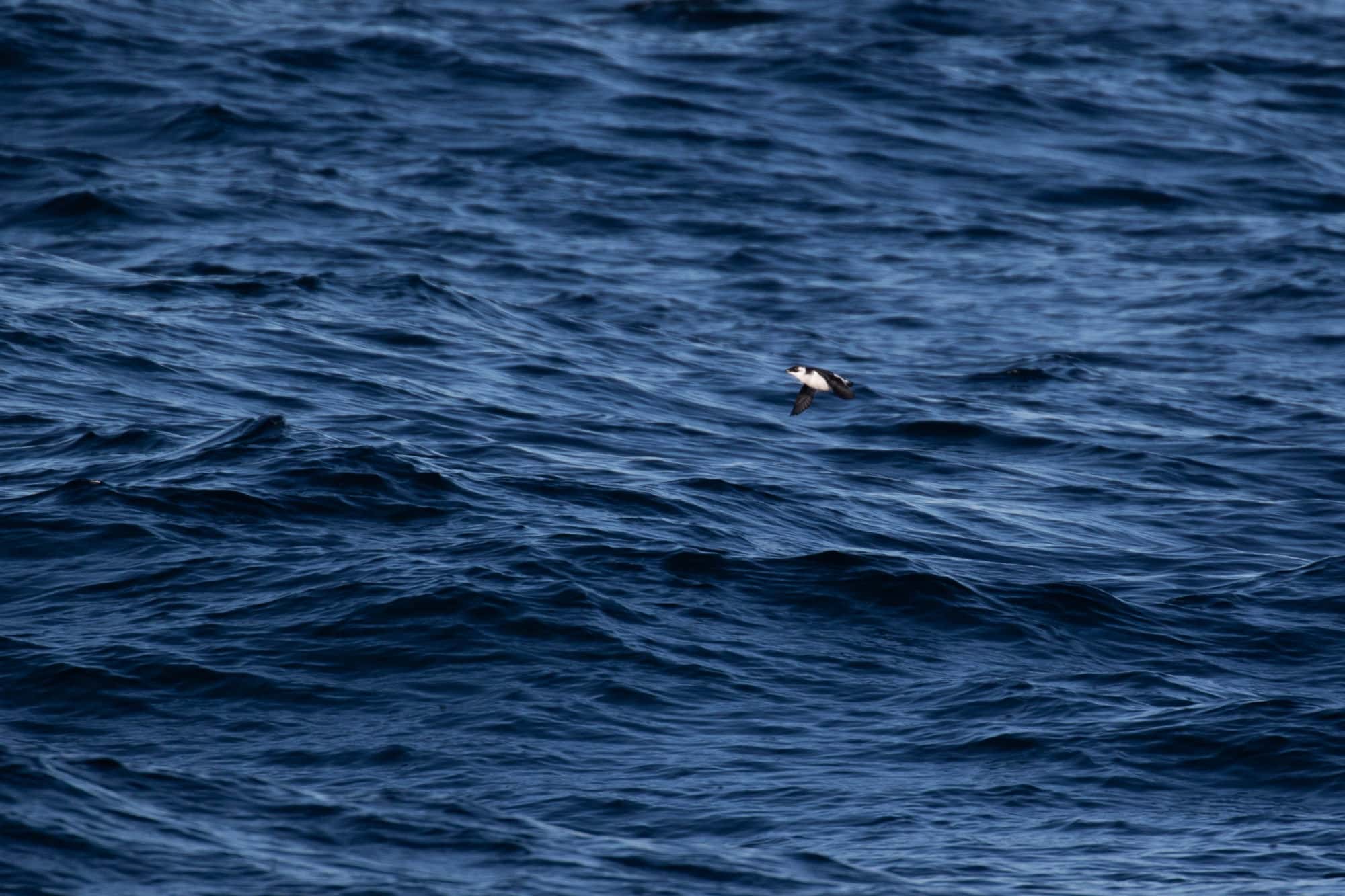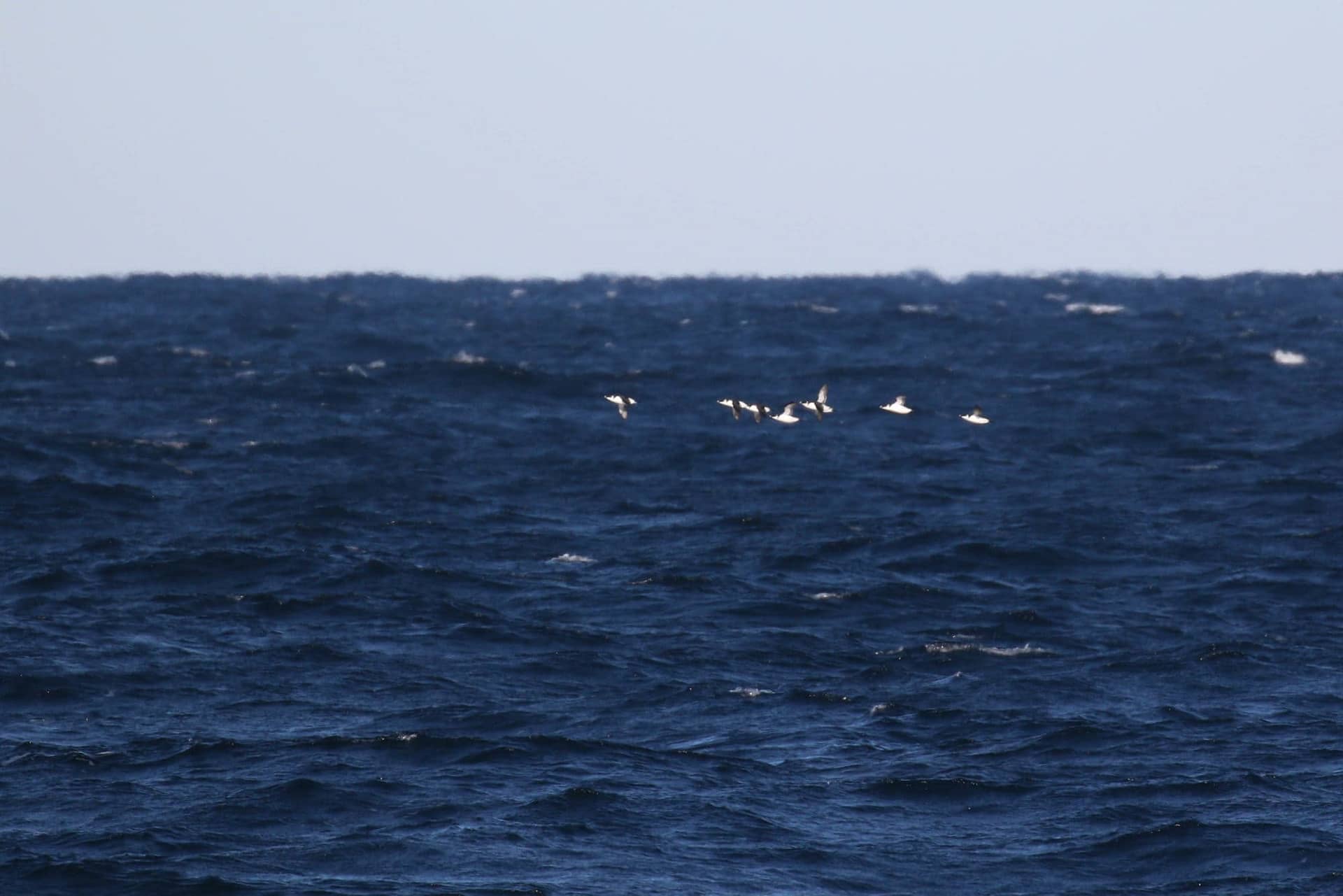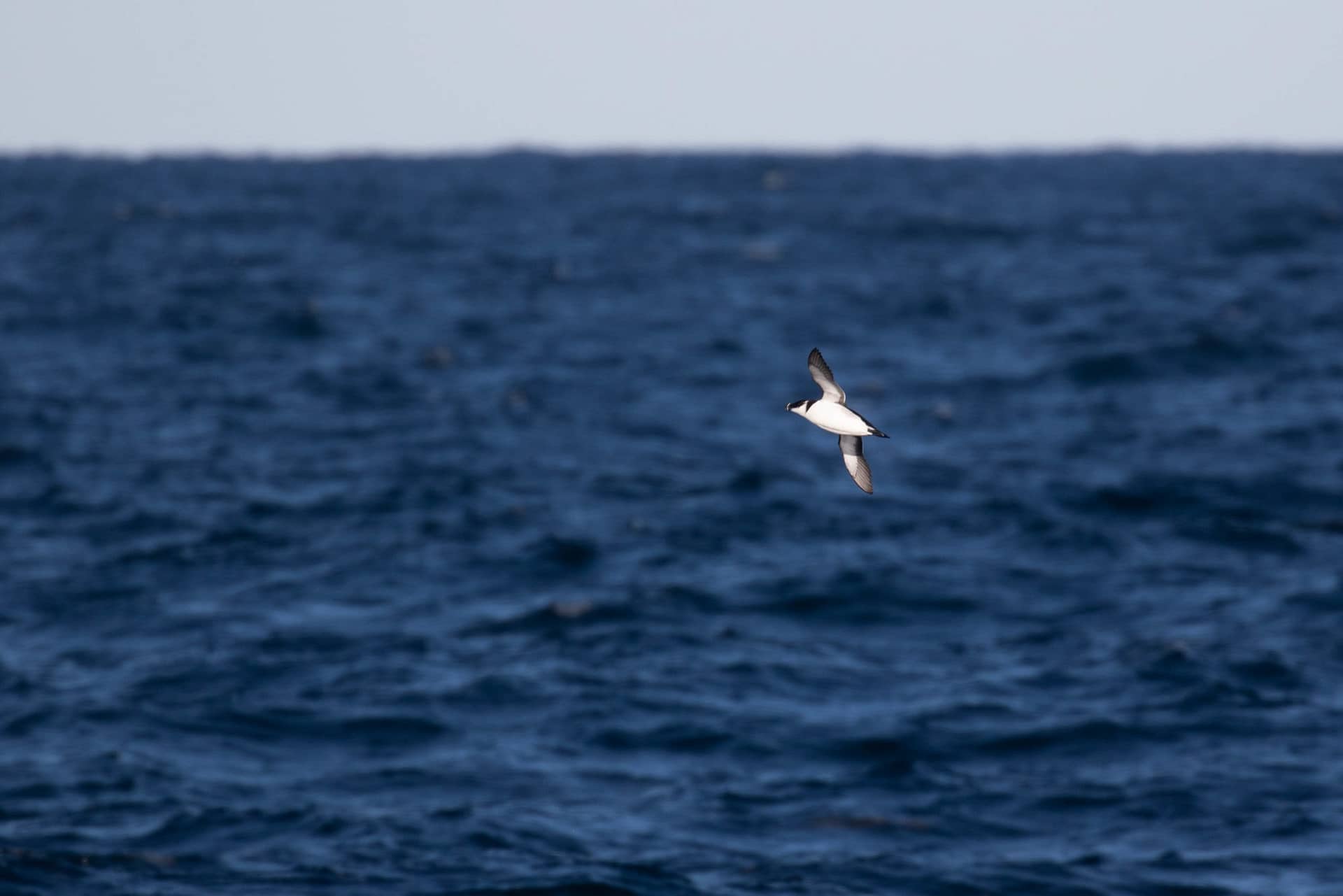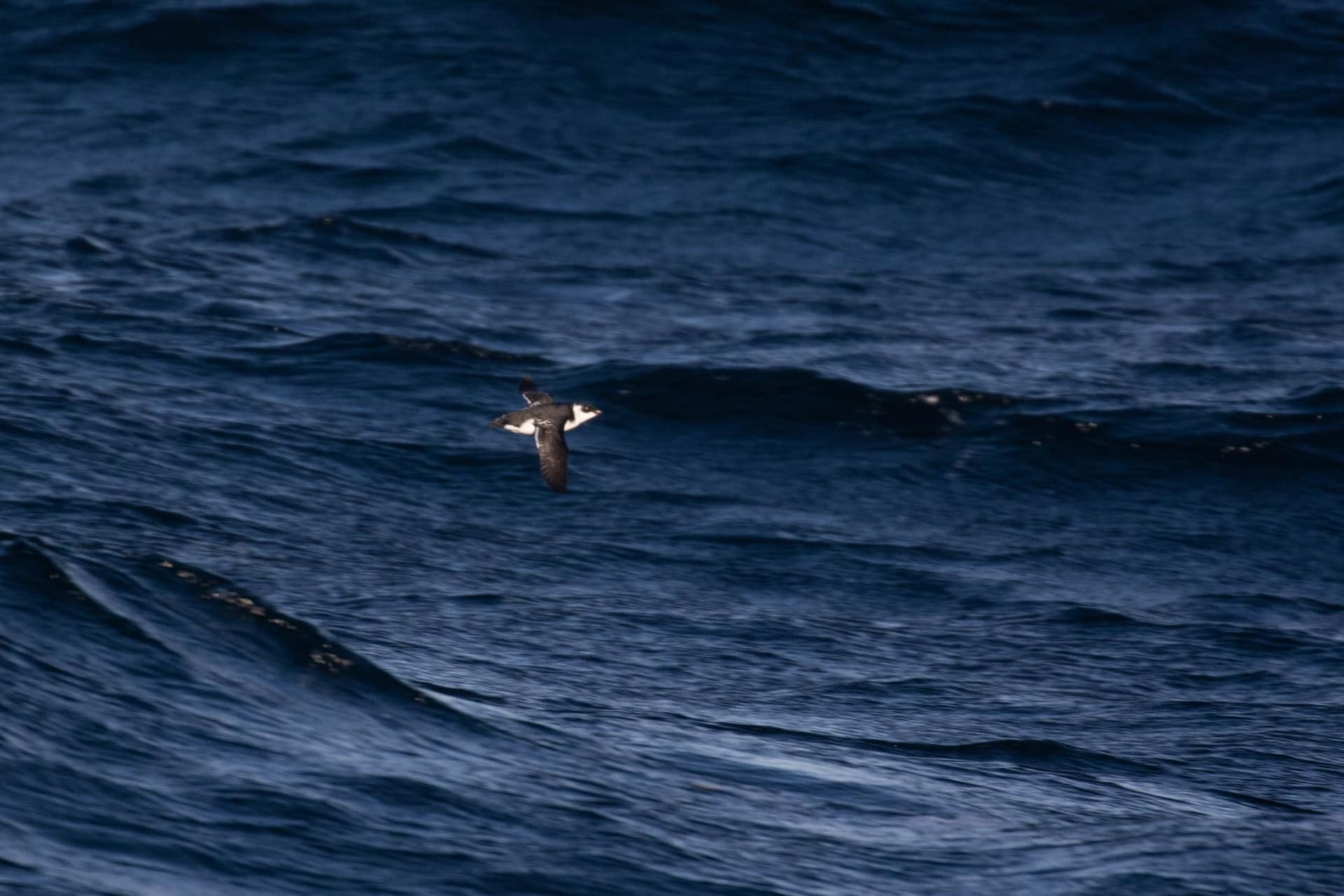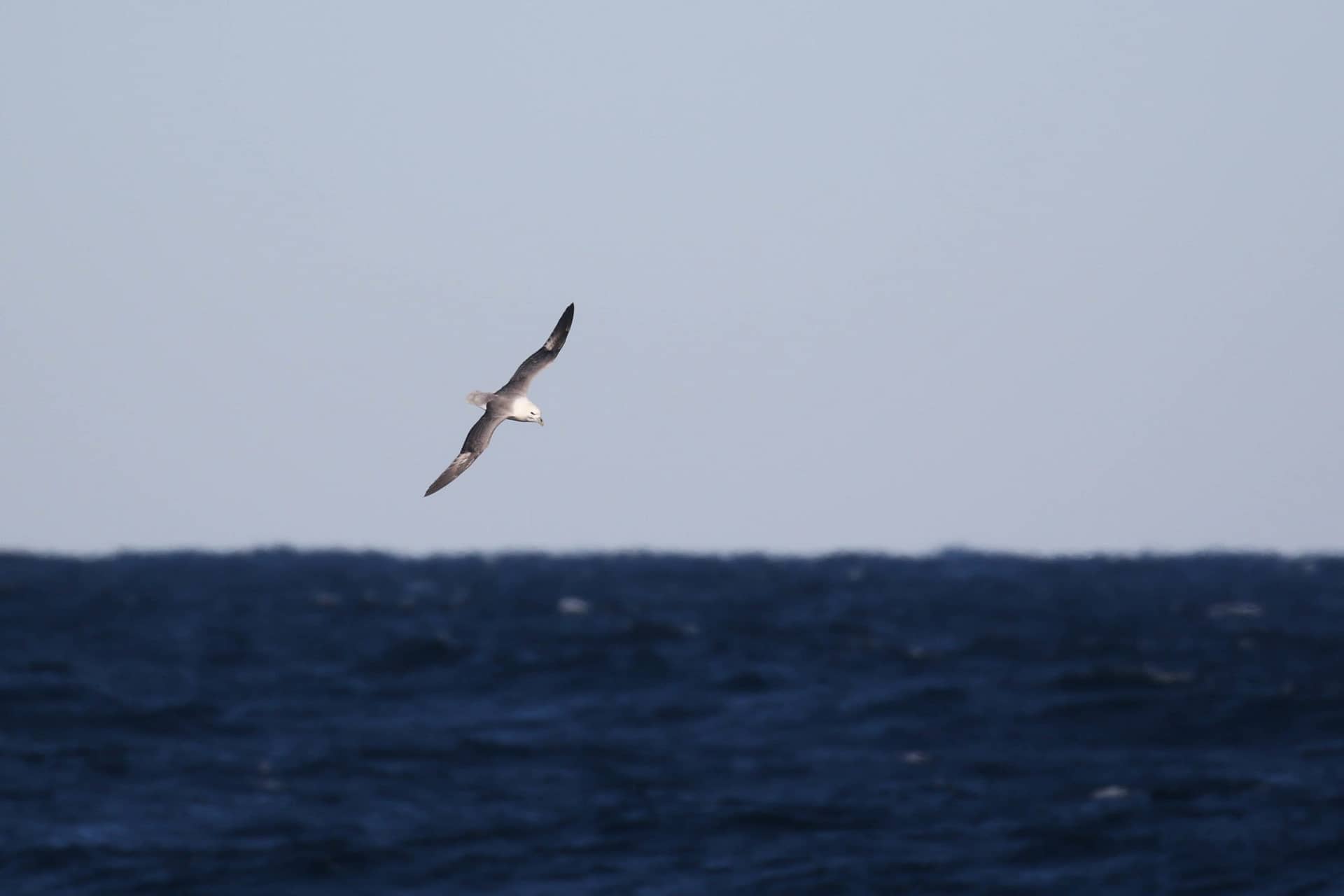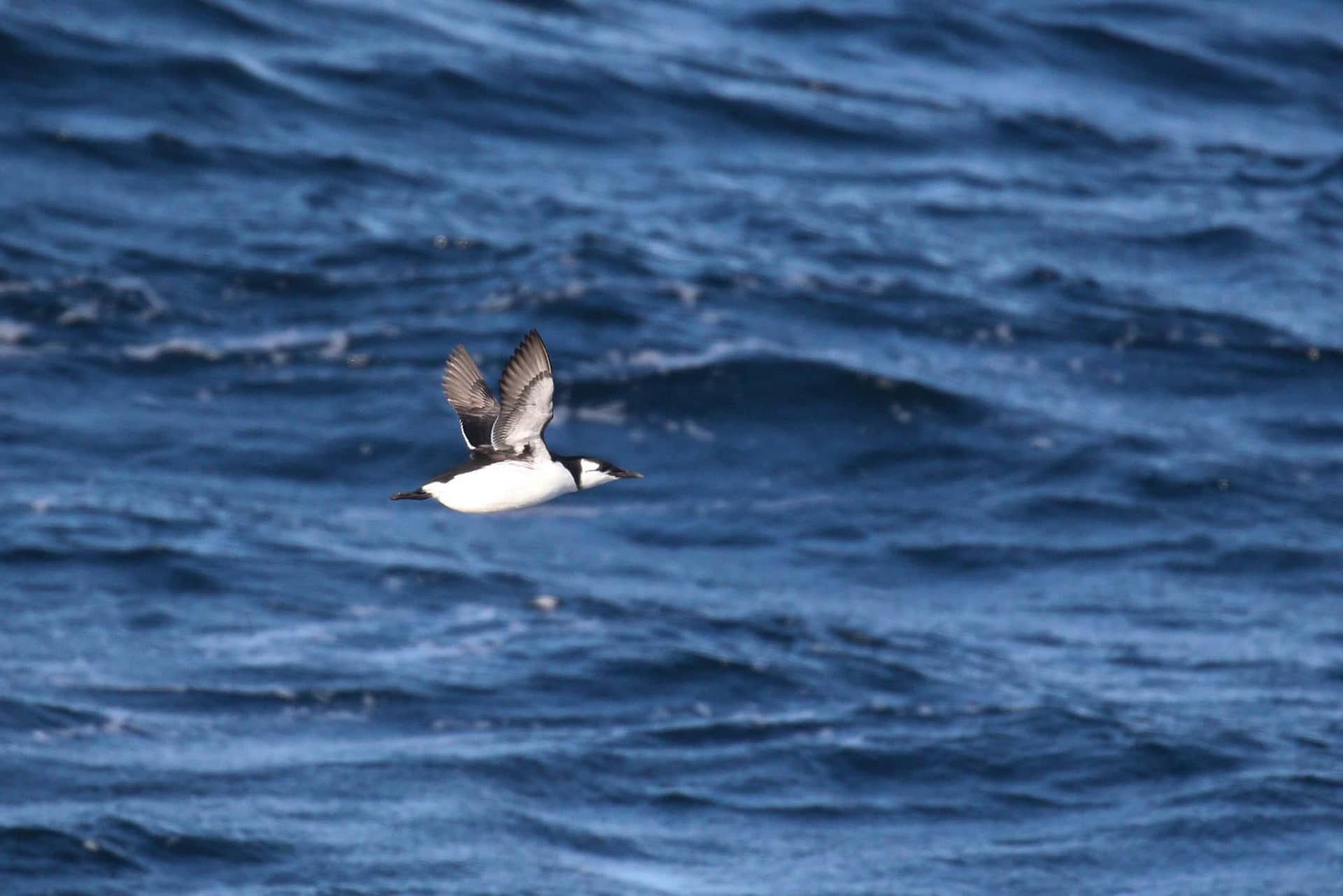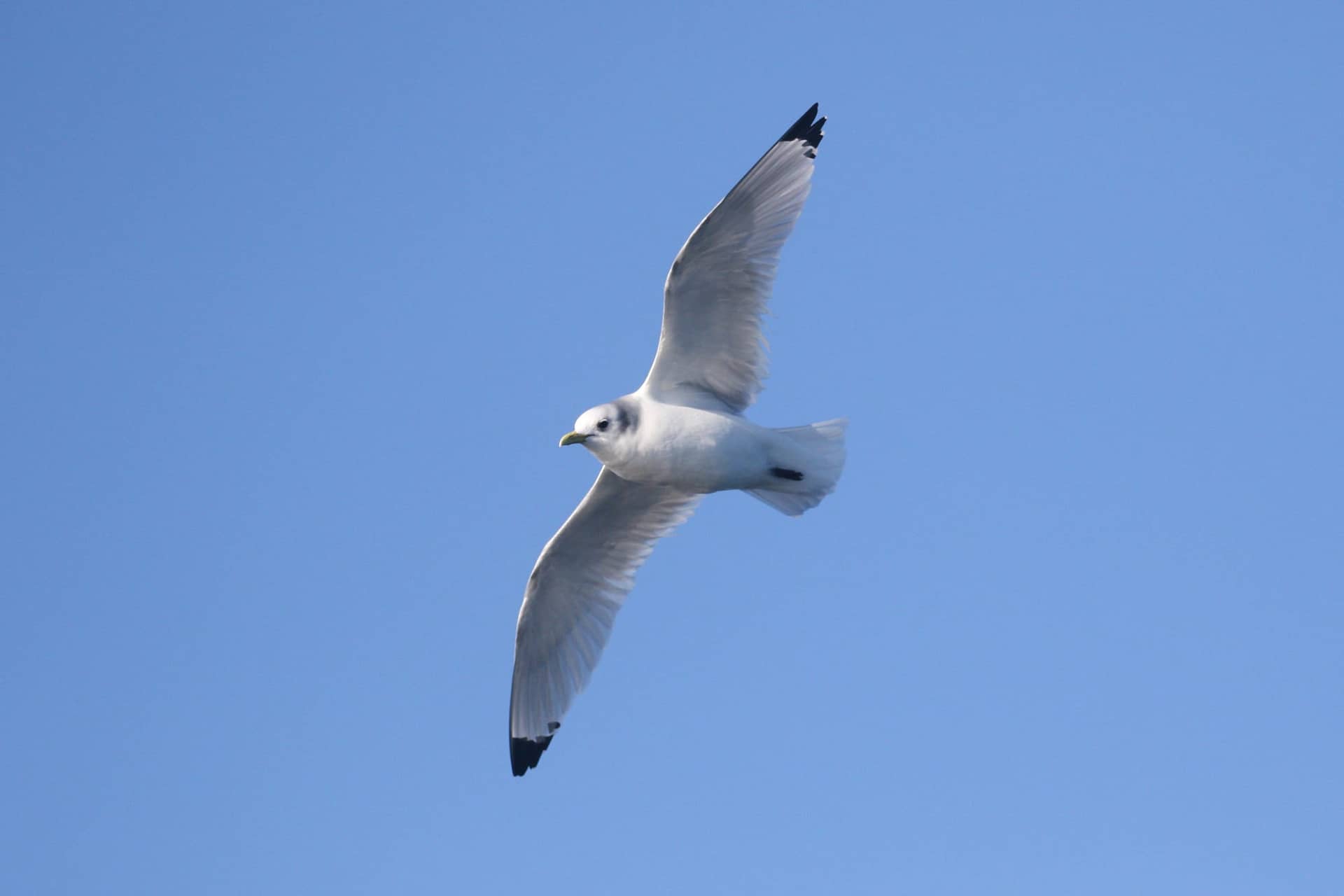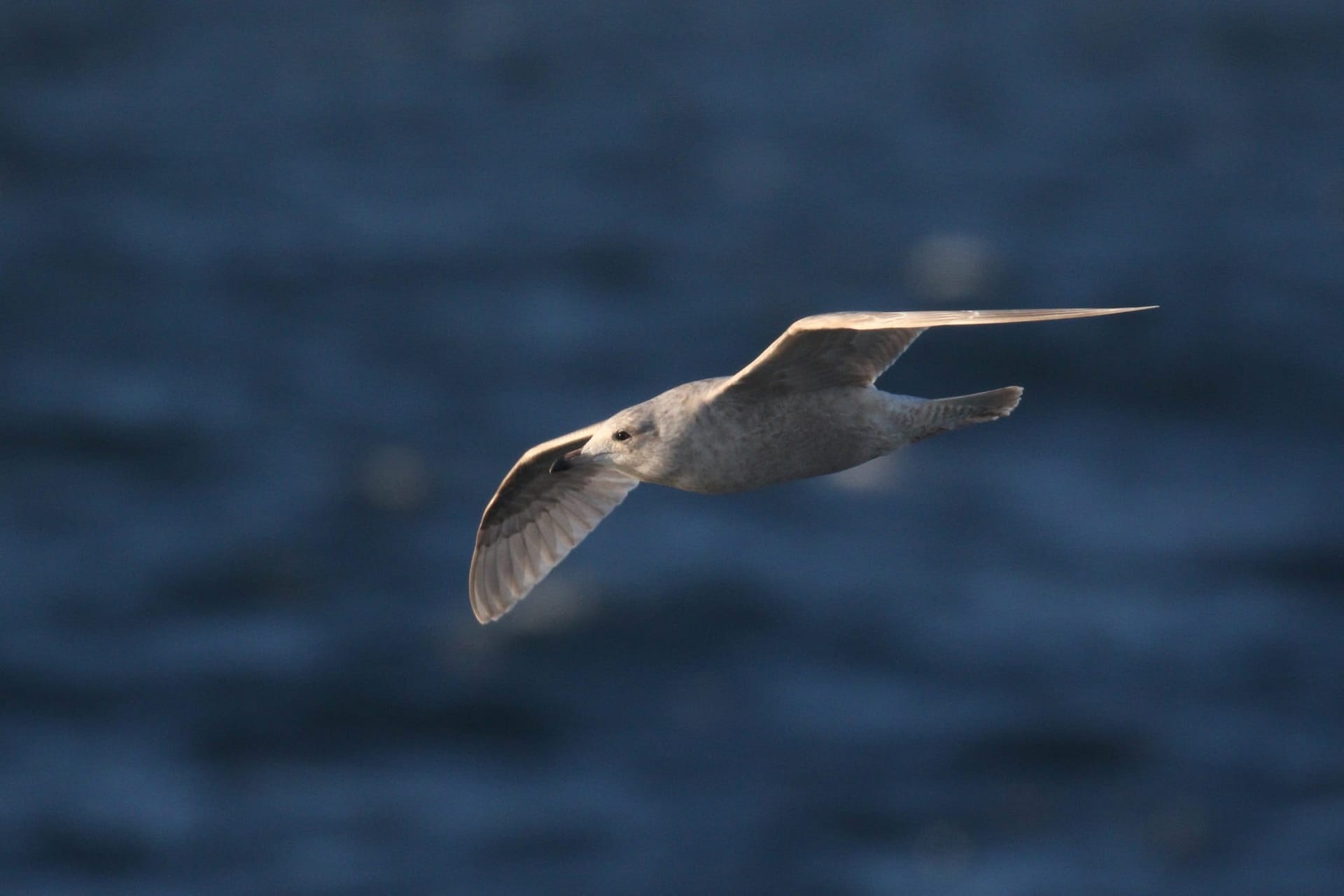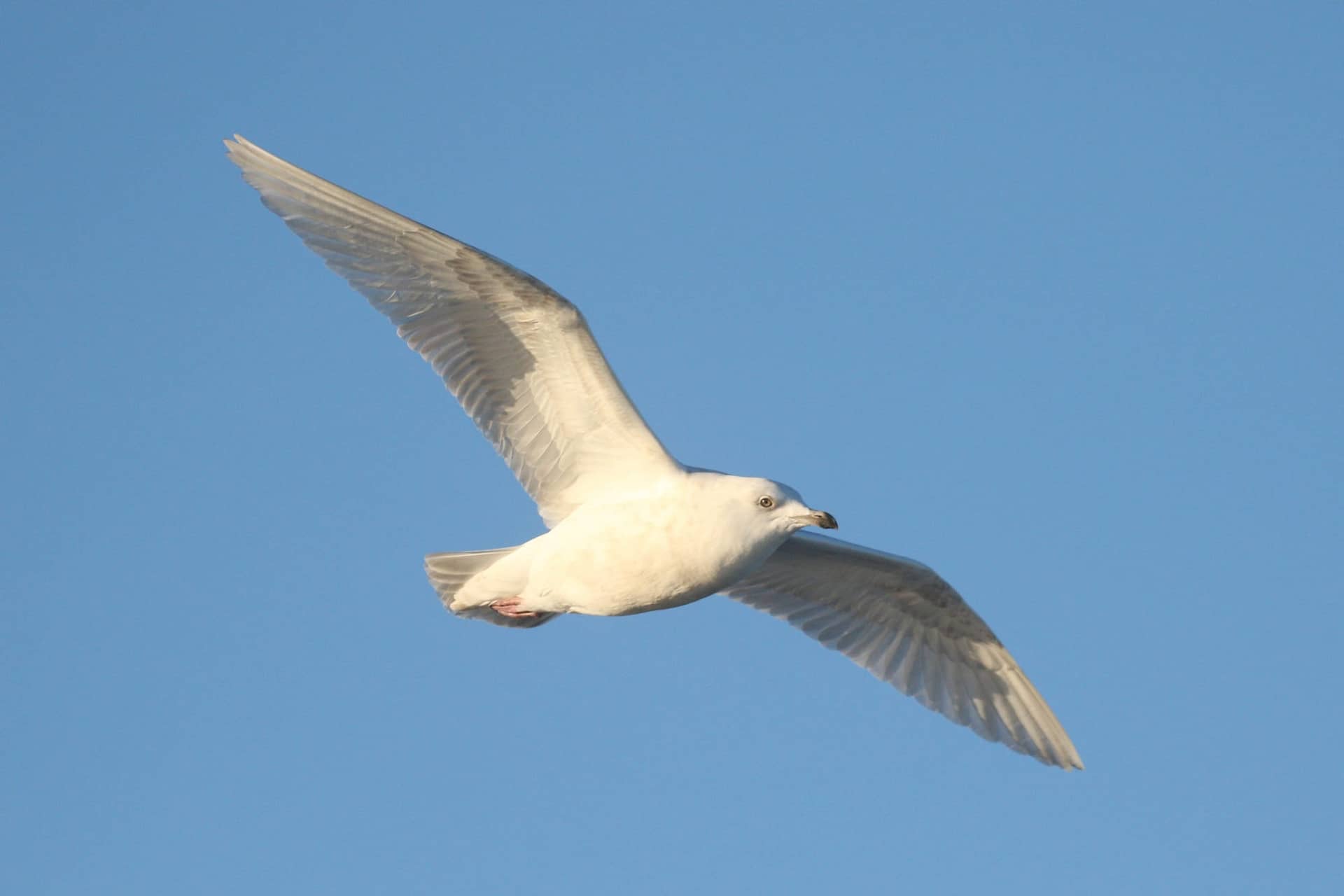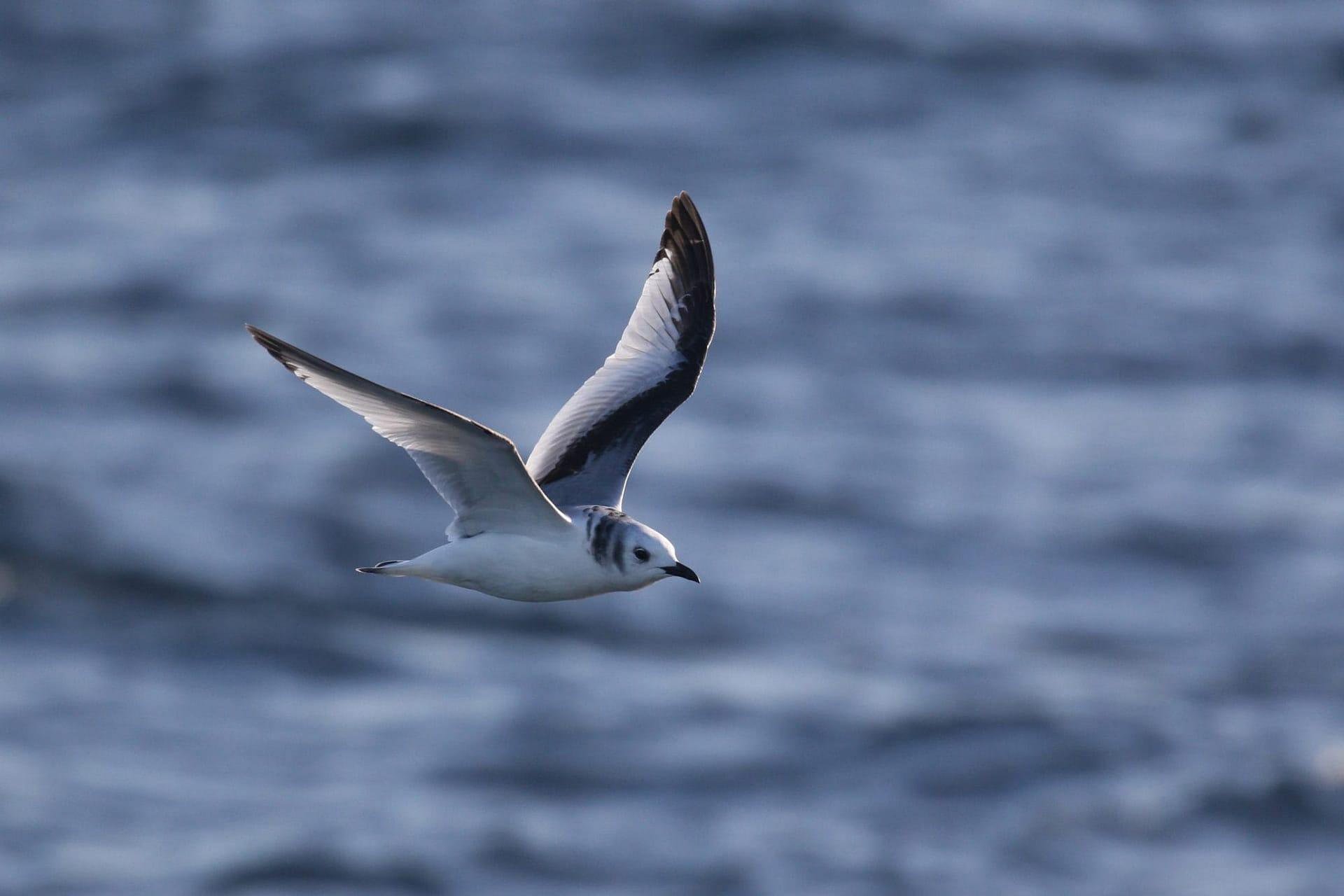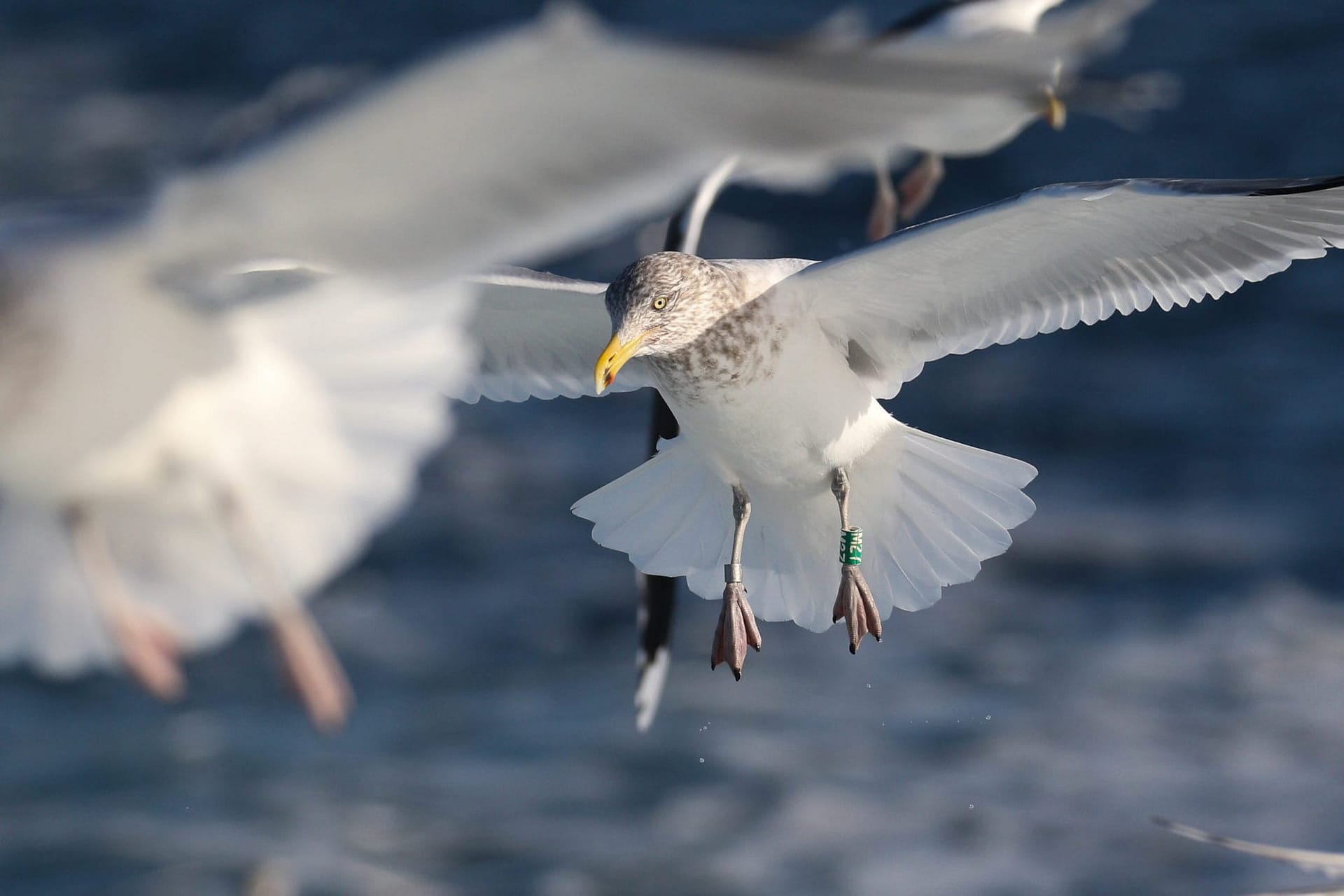Thanks to a tip-off from Zeke Cornell that January 10th would be the last outing this winter with Eastman’s charters, Lauren diBiccari and I arrived at the docks at Hampton Harbor, New Hampshire at 6:30am this past Sunday morning ready to head out into the frigid wind for our first wintertime New England pelagic. We were excited to meet fellow birder Chris Duffy on board, and the boatload of fisherman seemed confused why the three of us would ever want to stand in the wind and salt-spray on the top deck just to look at seagulls… nonetheless, we set off with smiling faces. In the harbor (follow links to eBird checklists) a 1st-winter Glaucous Gull and the long-time winter resident adult Glaucous Gull nicknamed ‘Glockenspiel’ were both mixed with dozens of Herring and Great Black-backed Gulls. Heading out the inlet we noted the usual seaducks and Common Loons.
7:10am to 9:25am were spent motoring 31 miles slowly but
steadily east to Jeffrey’s Ledge. We passed about 4 miles south of the Isles of Shoals during our commute. The ocean conditions were rough, with choppy seas (averaging 4 meter swells, and a few bigger waves), and strong winds tossing spray up onto the top deck. Clear, sunny skies were a silver lining however, and we did our best scanning and started spotting Razorbill and Common Murre 9 miles from shore.
Our first Dovekie (aka Little Auk) were spotted 22 miles from shore, then they became abundant after 25 miles. Black-legged Kittiwakes joined the gulls behind the boat at 12 miles offshore, and we only noted adults. Four Iceland Gulls came and went behind the boat, although one 1st-winter bird with 2 missing tail feathers latched onto us early and stayed with us for literally the entire day. A 1st-winter Glaucous Gull briefly followed us around 30 miles offshore just before we reached the ledge. We spotted our first Northern Fulmar 19 miles offshore, and then another one 28 miles offshore. The majority of these pelagic sightings were technically in Maine waters.

Flock of Dovekie, photo by Alex Lamoreaux

Juvenile Great Black-backed Gulls fighting over an Acadian Redfish, which is a deepwater rockfish native to the Gulf of Maine, photo by Alex Lamoreaux
From 9:30am to 1:10pm we covered ~11 miles up on Jeffrey’s Ledge where the wave action was much more calm and the wind speed died down. This large, narrow underwater plateau rises 150 meters from the surrounding muddy basins. Upwellings on the ledge congregate fish and seabirds. We were in Maine waters (according to nearest point of land) for this entire time. We moved steadily south on the ledge and made at least 3 dedicated stops so that fisherman aboard could try for Haddock. They were very successful in catching Haddock, and notable bycatch included many Atlantic Cod, at least 5 Longhorn Sculpin, and at least 1 beautiful Acadian Redfish. Chris took some Haddock home for soup, and told me he found a juvenile Red Hake in the stomach of a Haddock.
On the bird front, the only waterfowl seen were a single group of 4 female Common Eider, single group of 3 White-winged Scoter, and a lone female Long-tailed Duck. Alcids were abundant, especially Dovekie. We kept careful count and had 157 Dovekie, 31 Common Murre, 25 Razorbill, and 29 unidentified large alcid (Razorbill/Common Murre). Chris had brief views of a distant Atlantic Puffin. Around 12-15 Black-legged Kittiwake were constantly surrounding the boat, plus ~45 others were seen moving generally northward in small groups. All kittiwakes were adults. At least 6 Northern Fulmar were spotted, and all were light type. The fulmar were a mix of fresh juveniles and molting adults. Four adult Northern Gannets put on a nice show. A small group of Short-beaked Common Dolphin were seen by Chris just as we left the ledge.

Juvenile Northern Fulmar and Great Black-backed Gull, photo by Alex Lamoreaux
From 1:15pm to 3:30pm we motored steadily
west back to Hampton Inlet. For this leg of the trip we were about 6 miles south of the Isles of Shoals and solidly within New Hampshire waters. We picked up another 52 Dovekie and 5 Common Murre, but they were all further than 20 miles offshore. Thirteen Razorbill and 14 unidentified large alcid (Razorbill/Common Murre) were peppered along the entire route back. At 17 miles offshore Chris spotted 2 Atlantic Puffins! A lifer for Lauren! Both were probable adult males by bill size and color. The second bird was so engorged on fish that it was unable to fly away from the boat.

Atlantic Puffin, photo by Alex Lamoreaux
At 10 miles from shore I spotted another distant puffin. Among 55 kittiwakes, we spotted our one and only juvenile of the entire day. At least 150 Herring and 80 Great Black-backed Gulls trailed behind the boat trying to snag bits of fish being tossed out, and mixed with them were 2 Glaucous and 2 Iceland Gulls. One of the adult Herring Gulls had a green legband marked ‘M27’ and was likely banded as part of the gull research on nearby Appledore Island. Our final Northern Fulmar of the day was 23 miles offshore.
Entering the inlet, there was a nice collection of Harbor Seals lounging on the rocks and we again had the standard assortment of seaducks plus 1 Red-necked Grebe. Chris spotted an adult Peregrine feasting on some unfortunate bird. Overall it was a really wonderful day on the sea, with some great birds and fun times! In total we saw 241 Dovekie, 55 Common Murre, 45 Razorbill, 61 unidentified large Alcids, 4 Atlantic Puffin, 123 Black-legged Kittiwake, 7 “Kumlien’s” Iceland Gulls, 2+ Glaucous Gulls, 9 Northern Fulmar, and 6 Northern Gannet. There’s nothing better than big waves and Little Auks!

Adult Northern Fulmar, photo by Alex Lamoreaux
